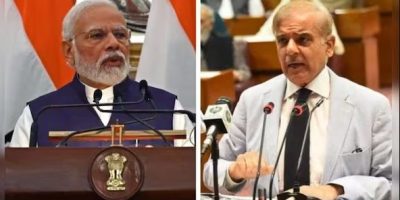Youm-e-Takbeer: Pakistan’s Nuclear Odyssey and Beyond

Faiza Abid
In Pakistan’s illustrious journey, few chapters shine as brightly as the saga of its nuclear programme, a narrative woven with unwavering determination, wisdom, and national pride. Amid the chants of “Allah-o-Akbar”, Pakistan conducted its first series of nuclear tests in the Chagai District of Balochistan on 28 May 1998. The day came to be known as Youm-e-Takbeer, which literally translates to the day when “Allah’s name was exalted”. The day reaffirmed the Pakistani nation’s faith in the omnipotence of Allah Almighty. As dawn breaks on this day, Pakistan stands at the threshold of remembrance and celebration, honouring the sacrifices and achievements of those who fortified the nation’s defence and made it unassailable.
In the wake of India’s provocative nuclear tests, Pakistan’s decision to assert its sovereignty and security through nuclear capability was a defining moment for the nation. It served as a declaration to the world that Pakistan will not be dictated to, nor will it falter in safeguarding its people and territory. From its humble beginnings in 1971 to the historical milestone of 1998, Pakistan’s nuclear programme stands as a testament to the vision and dedication of key figures, who emerged as guiding lights, navigating a complex web of technocratic, political, and military hurdles. One prominent figure among them is Dr Abdul Qadeer Khan, renowned as the “father of Pakistan’s nuclear programme,” standing tall for his pivotal role. His expertise in metallurgy and uranium enrichment technologies played an instrumental role in Pakistan’s nuclear advancement. Accompanying Dr Khan in his endeavour were a host of brilliant minds, including Dr Samar Mubarkmand, Dr Ishfaq Ahmen, and Mr Munir Ahmad Khan. Collectively, these distinguished individuals defied formidable challenges, showcasing Pakistan’s capacity to achieve technological excellence against all odds.
The origins of Pakistan’s nuclear programme lie in the turbulent geopolitical landscape of South Asia. After India denoted six nuclear devices between 11 and 13 May 1998, the response of the international community was tepid at best, failing to hold India accountable for its actions. Hence, amidst India’s assertiveness and perceived threat to its security, Pakistan found itself compelled to react swiftly, marking a pivotal moment in its pursuit of deterrence and defence. Pakistan’s nuclear testing ushered in an era of strategic equilibrium in the region, preventing conflicts from escalating into a full-scale war. Thereafter, this delicate balance of power has provided a semblance of stability in an extremely volatile region. Under a robust command and control system, Pakistan’s Full Spectrum Deterrence, in line with the dictates of Credible Minimum Deterrence, acts as a bulwark against Indian aggressive designs, including the ominous spectre of the Cold Start Doctrine and more recently their tilt towards first-strike counterforce options.
However, Pakistan is committed to responsible nuclear stewardship, as evident from its adherence to global norms and protocols governing nuclear weapons, active engagement in nuclear diplomacy, and regular safety assessments to ensure the safe operation of its nuclear facilities.
The dividends of Pakistan’s nuclear programme extend far beyond defence. By harnessing the potential of nuclear technology, Pakistan has made significant strides towards attaining the United Nations’ Sustainable Development Goals (SDGs) in crucial spheres, such as energy, healthcare, industry, and agriculture. For example, in pursuit of cost-effective and clean energy, Pakistan’s Energy Security Plan 2030 delineates a target of 5 percent or 8800 MWE of nuclear power generation. However, in the aftermath of the advancement of expertise gained from KANUPP 1 and Chashma 1 and 2, this plan has expanded to a relatively ambitious projection of 42,000 MWE by 2050.
KANUPP-2 and KANUPP-3 stand as significant milestones, signifying ongoing strides in nuclear energy development, shaping a future of resilience for Pakistan’s energy needs. The signing of Chashma-5, equipped with HPR 1000 technology, also represents a leap forward in nuclear innovation. It also reinforces the enduring partnership between Pakistan and China, as well as shared aspirations for a sustainable future.
Therefore, Pakistan aims to harness the transformative potential of nuclear technology to bring unparalleled benefits to its people as well as the global community. Endeavours in this regard range from advancement in production of medical isotopes for treating cancer to exploration of nuclear desalination technologies for mitigating fresh water scarcity. Likewise, ongoing research in next-generation nuclear reactors, such as Small Modular Reactors (SMRs) carry a promise to revolutionise Pakistan’s energy production.
Today, Pakistan remains a steadfast partner in international collaboration, sharing its expertise and best practices for the greater good of humanity. Yet, amid the triumphs, challenges such as denial of technology loom large, testing Pakistan’s resolve. However, fervent nationalism and determination prevails to overcome all challenges. Therefore, as we reflect upon Pakistan’s nuclear journey, it is imperative to not only celebrate the past achievements, but also the boundless opportunities that lie ahead. United, the country can march forward with courage and determination, creating a bright future for Pakistan and its people.
Faiza Abid is a researcher at the Centre for Aerospace and Security Studies (CASS), Lahore. She can be reached at [email protected]
Related News

Bringing the Judiciary Back in Line
By: Qamar Bashir During martial laws and civil dictatorships, the judiciary has often been usedRead More

Modi’s third term and the future of India-Pakistan relations
Faryal Naz I’m writing to express my opinions about the recent events in India, ourRead More


Comments are Closed